©2025 Enrique Figueredo |
PASÓ POR AQUÍ
Pasó por aquí, in English, translates to: passed by here. It is the beginning of several sentences carved into the sandstone by Spanish conquistadores at El Morro National Monument. Coincidentally, a less formal translation is: happened by here, which is more fitting in order to place the emergence of Latinx culture in what is now the United States in New Mexico. That record exists as one of the earliest inscriptions at El Morro dated 1605. The painful and complex history that merges Indigenous American, Spanish, and African cultures is also evidenced by New Mexico’s Spanish missions.
I carve the formidable, historic churches into woodblocks mimicking the cutting of living mud and rock. Then I make rubbings of the inscriptions with graphite and paper, satisfying the physical connection between my Spanish ancestry and the New Mexico landscape. The carved line and the mission structures are treated as individual marks that speak the same language and employ relief printing to retell a well-known narrative. These lines are a measure of time, labor, location, and spirituality. Collectively they archive naturally decaying landmarks and storytelling.
Bark beetles kill millions of trees in the American Southwest every year by scoring linear abstractions throughout the trunks. The inclusion of the beetle’s mark in this work is not an accidental use of lines made by an invasive insect. They are symbolic of the intricate relationship that the missions have with the land, and their codices are similar to the characters inscribed by the conquistadores. The interplay of the writing styles collapses species and time, which suggests unearthly forces behind the mark making. I compare the damage caused by the inscriptions at El Morro, the engravings of the Bark beetle, and the building of Spanish missions to question humanity and nature’s instinctual urge to carve, colonize, and destroy.
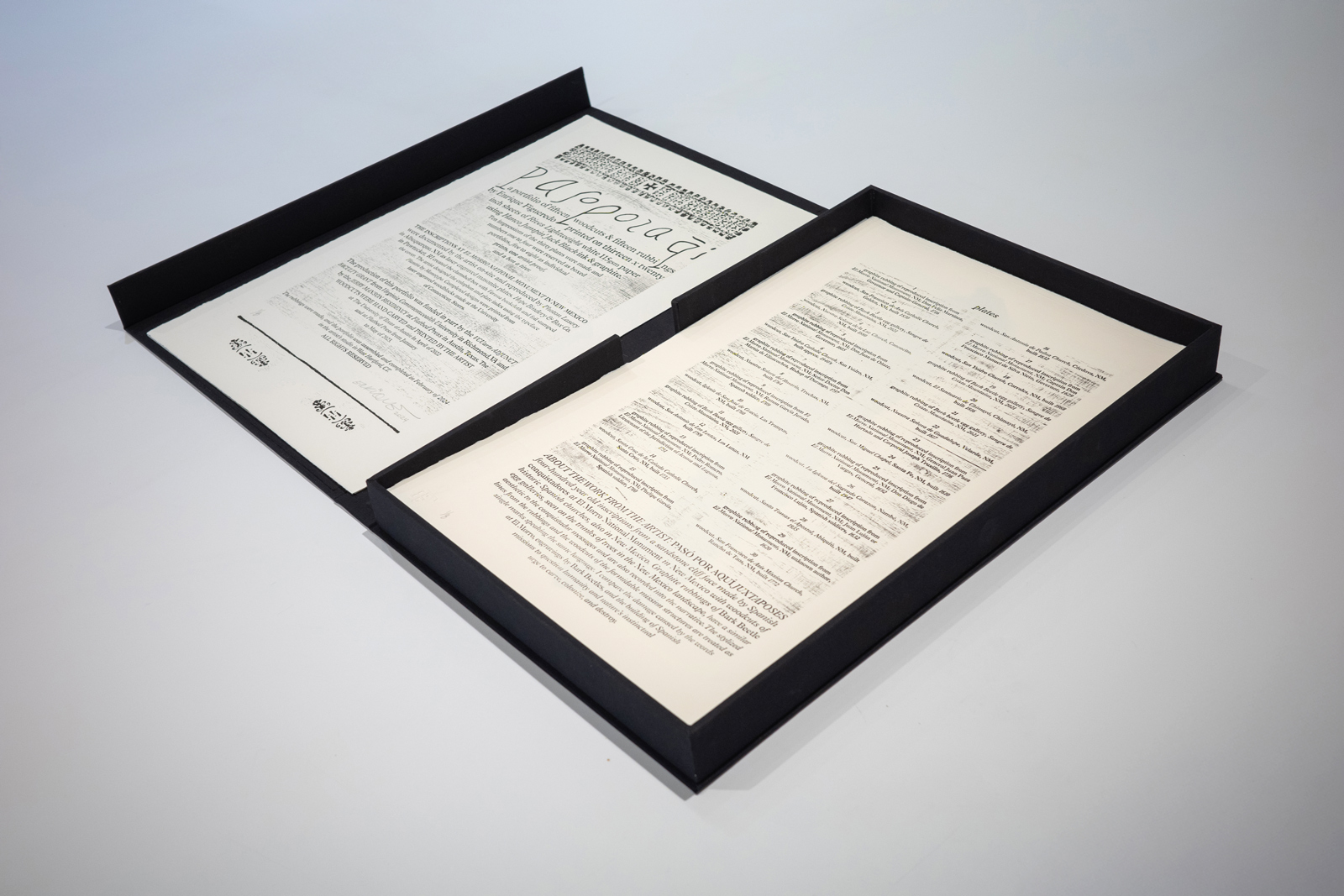
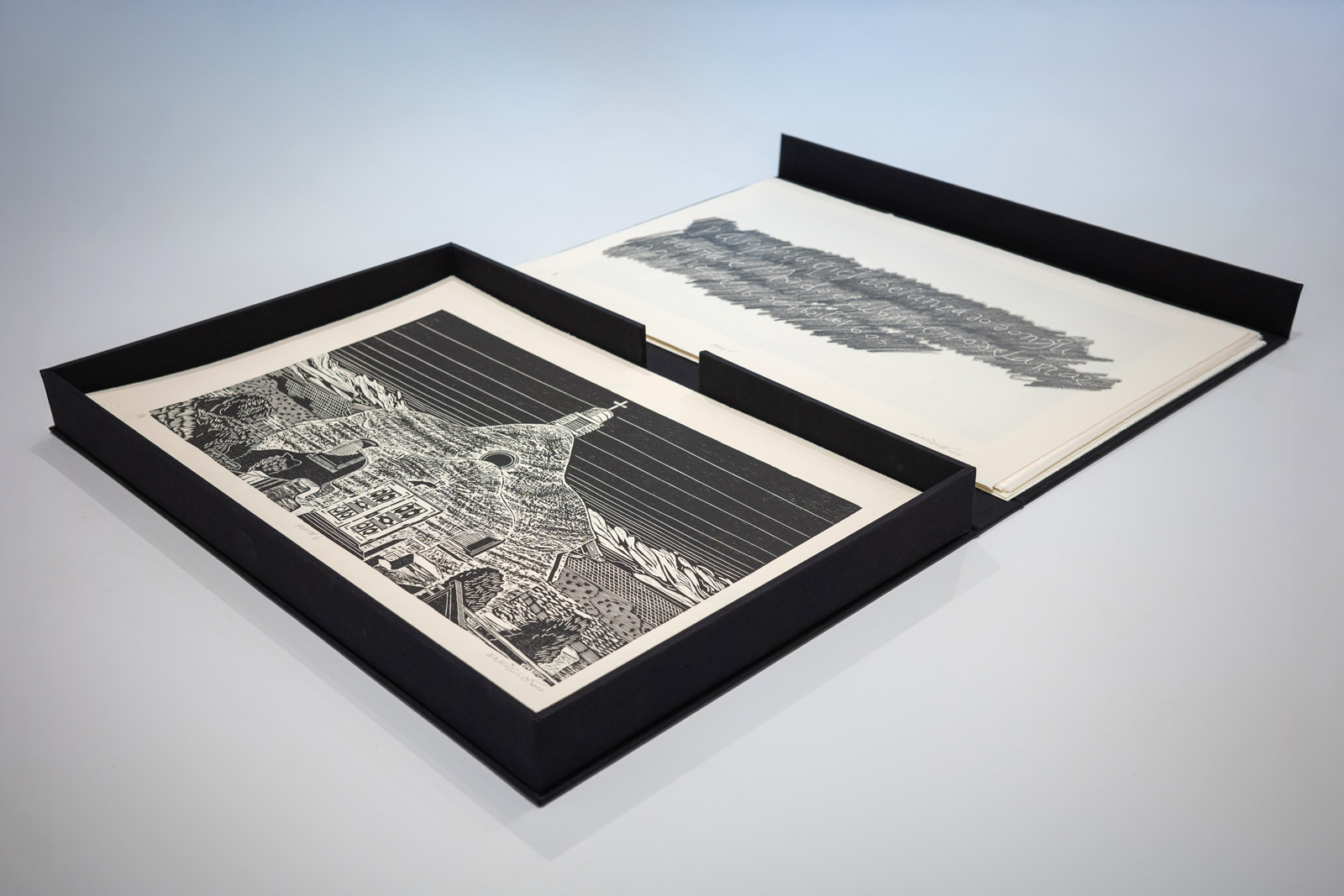
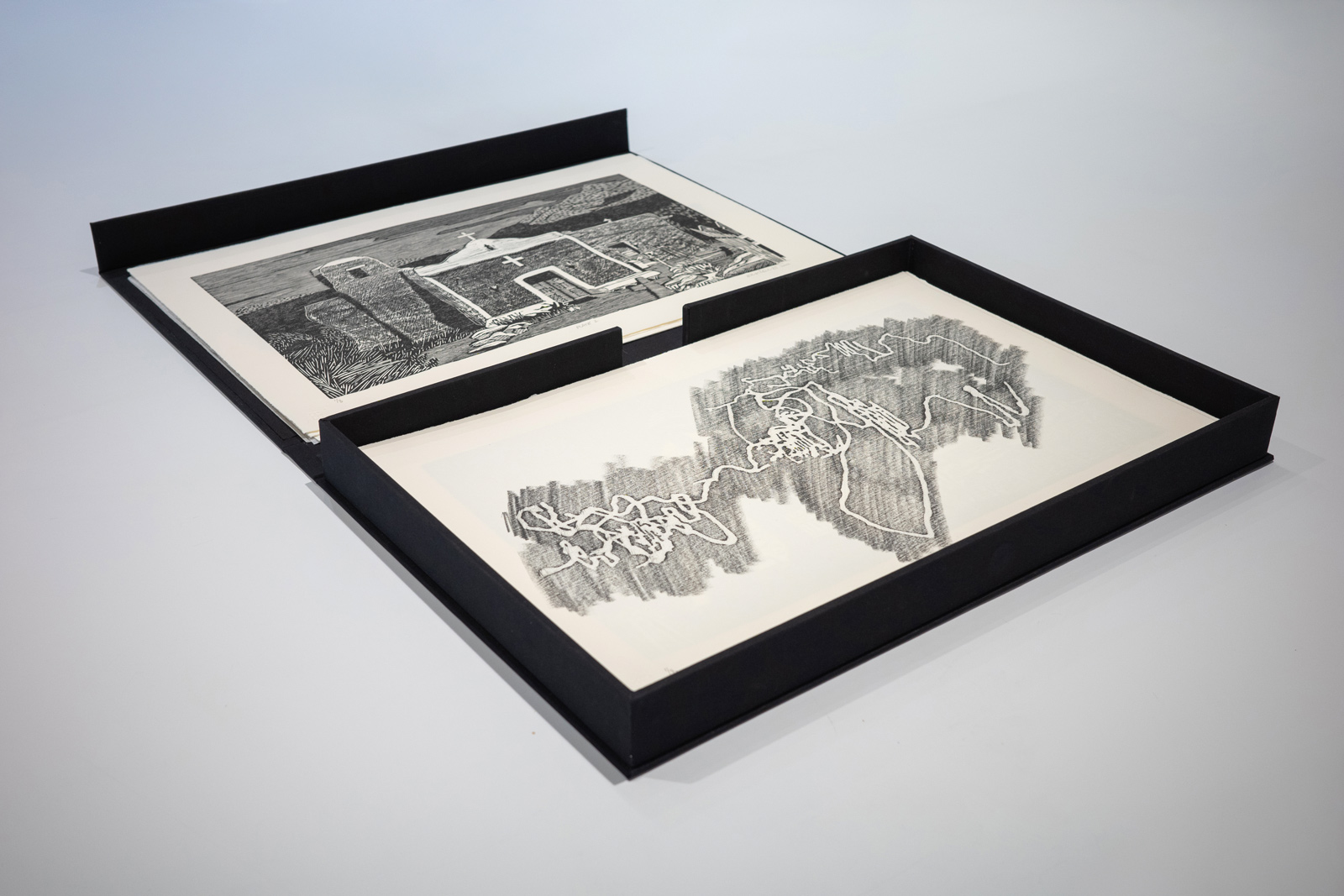

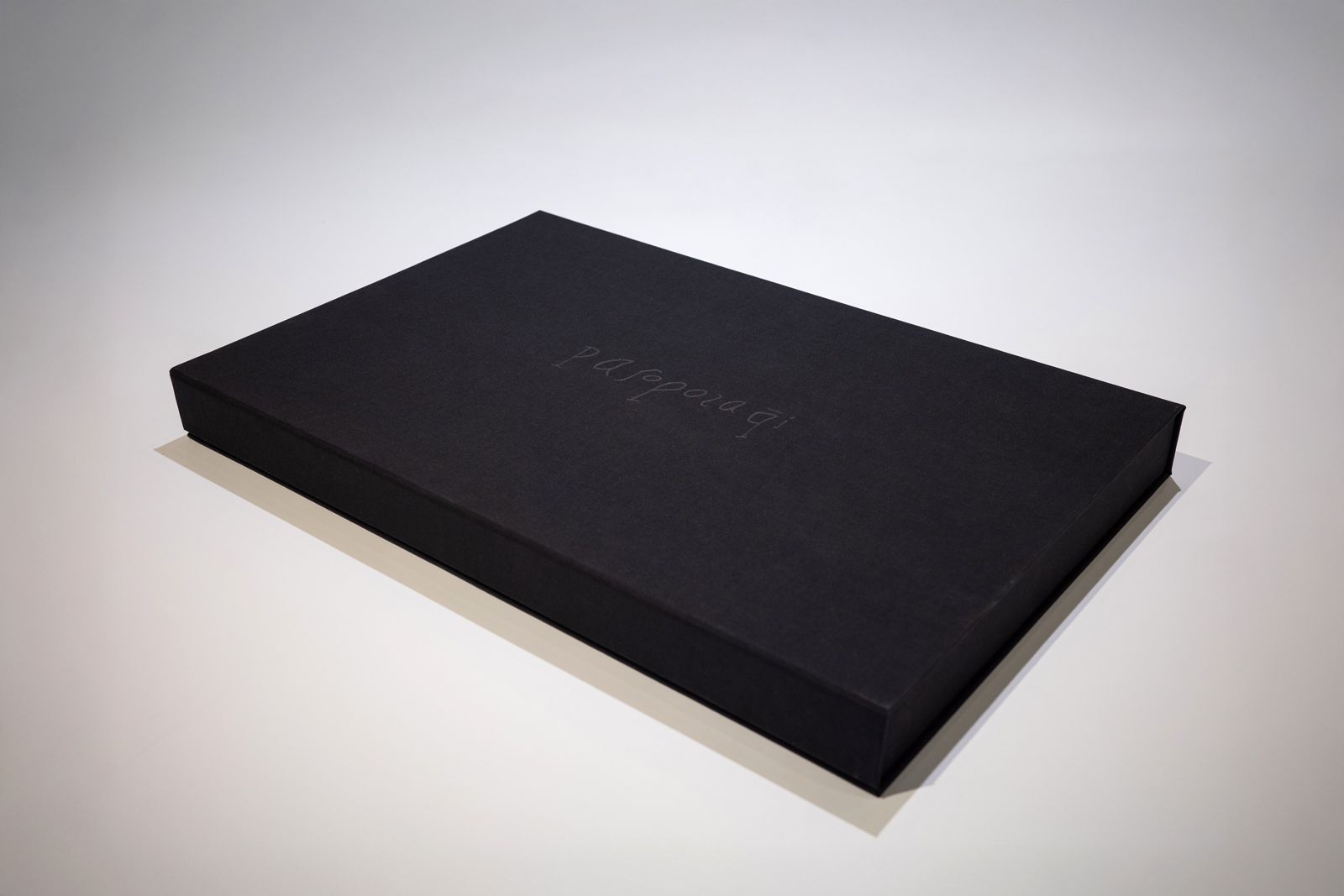
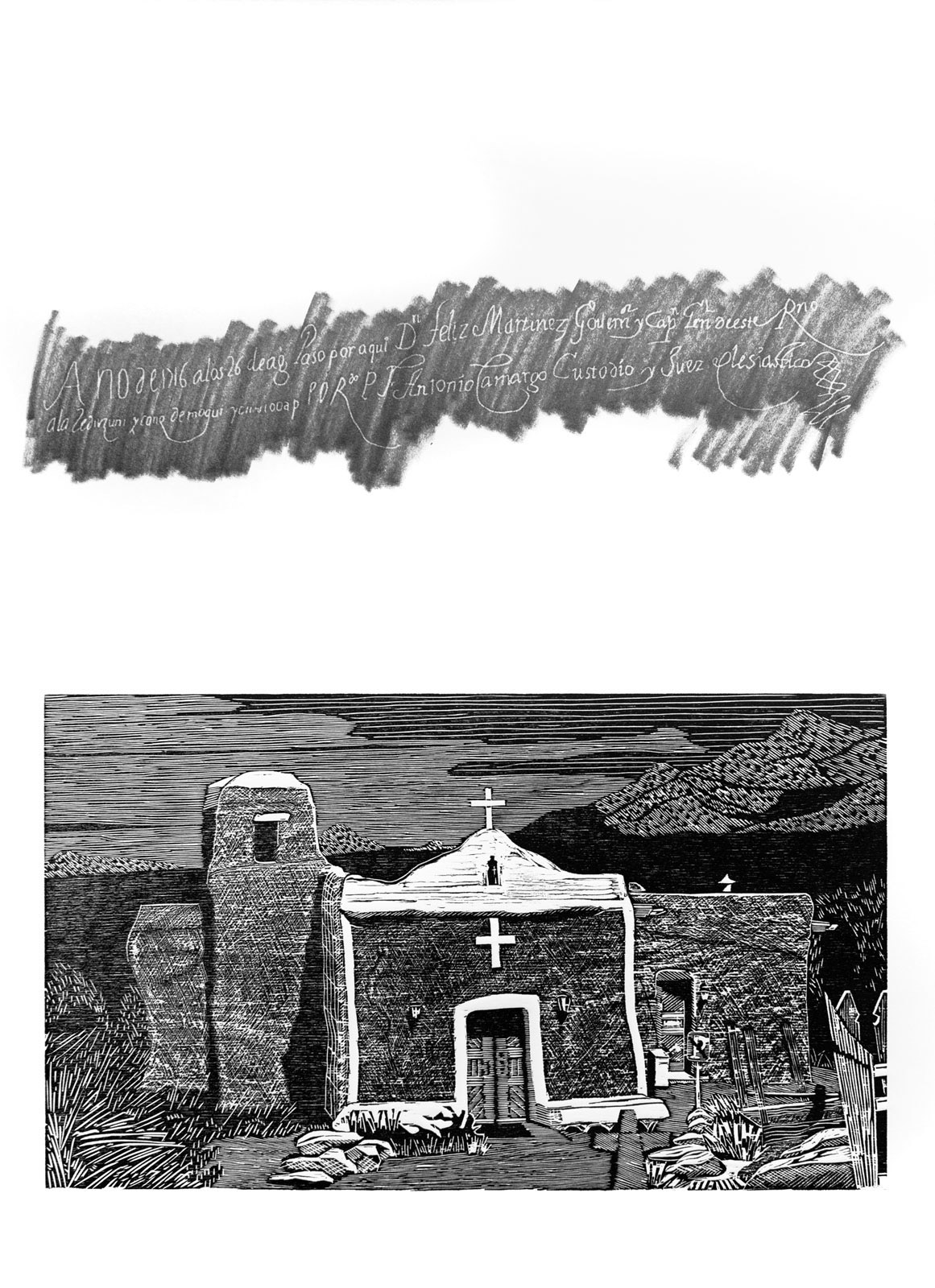
Plate 1
26 x 19 inches paper size
top: graphite rubbing of reproduced inscription from El Morro National Monument, NM
Don Feliz Martínez, Governor and Captain-General, 1716
bottom: woodcut, San Francisco de Asís Catholic Church, Golden, NM, built 1830
|
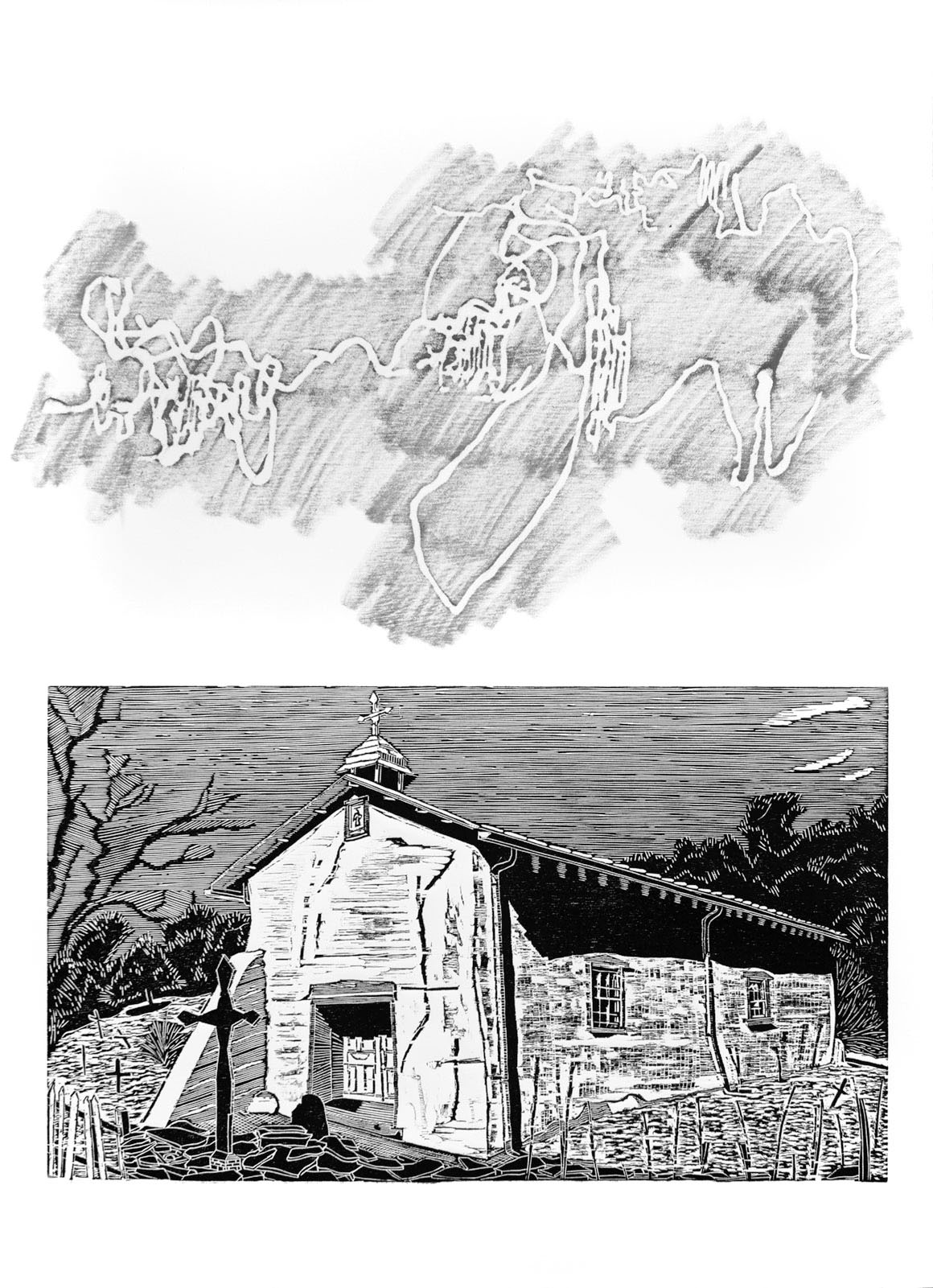
Plate 2
26 x 19 inches paper size
top: graphite rubbing of Bark beetle egg gallery, Sangre de Cristo Mountains
bottom: woodcut, Nuestra Señora de la Luz Church, Canoncito, NM, built 1880
|

Plate 3
26 x 19 inches paper size
top: graphite rubbing of reproduced inscription from El Morro National Monument, NM
Don Juan de Oñate, Governor, 1605
bottom: woodcut, San Ysidro Catholic Church, San Ysidro, NM, built approx. 1940’s
|
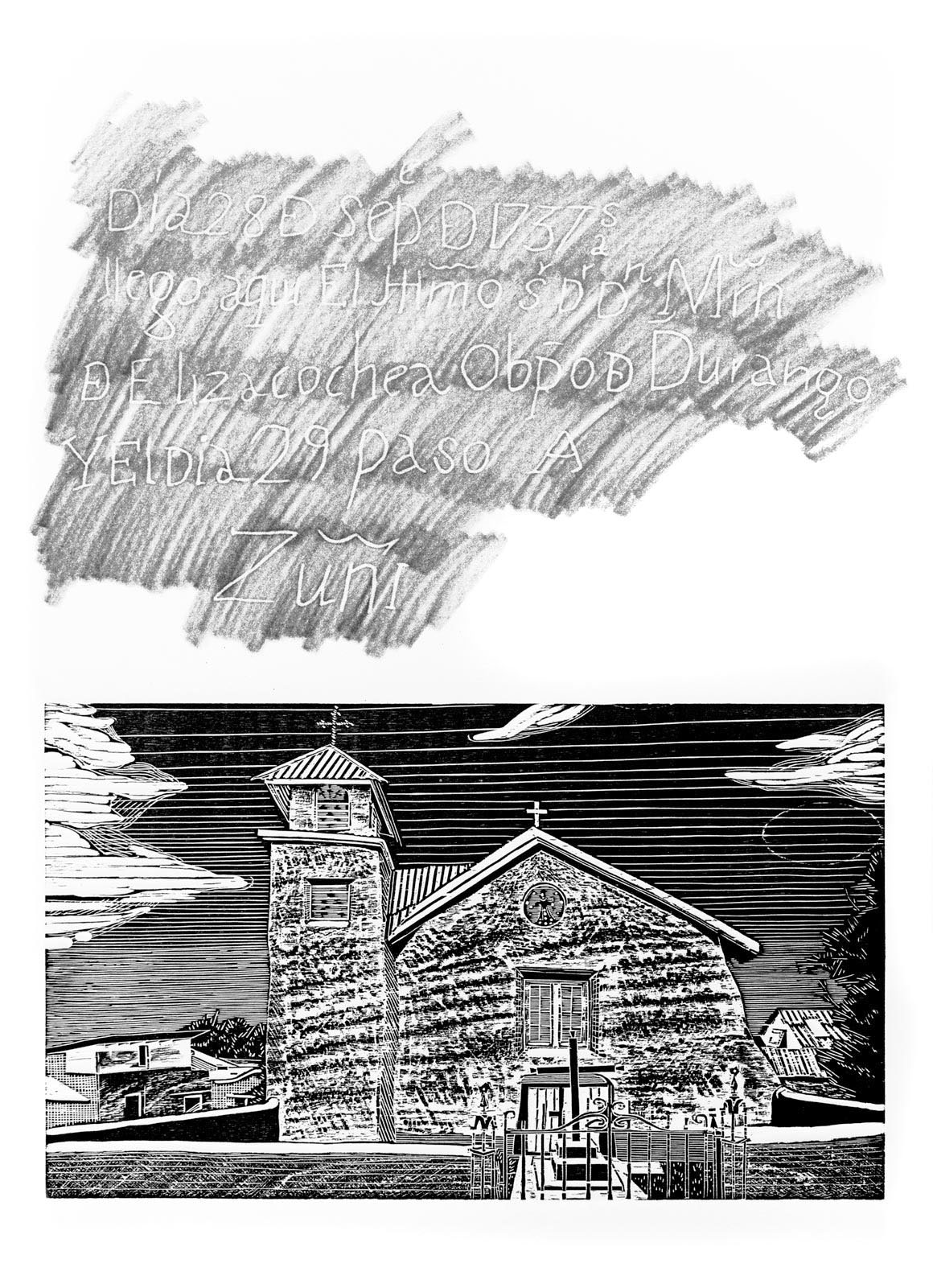
Plate 4
26 x 19 inches paper size
top: graphite rubbing of reproduced inscription from El Morro National Monument, NM
Señor Doctor Don Martín de Elizacochea, Bishop of Durango, 1737
bottom: woodcut, Nuestra Señora del Rosario, Truchas, NM, built 1764
|
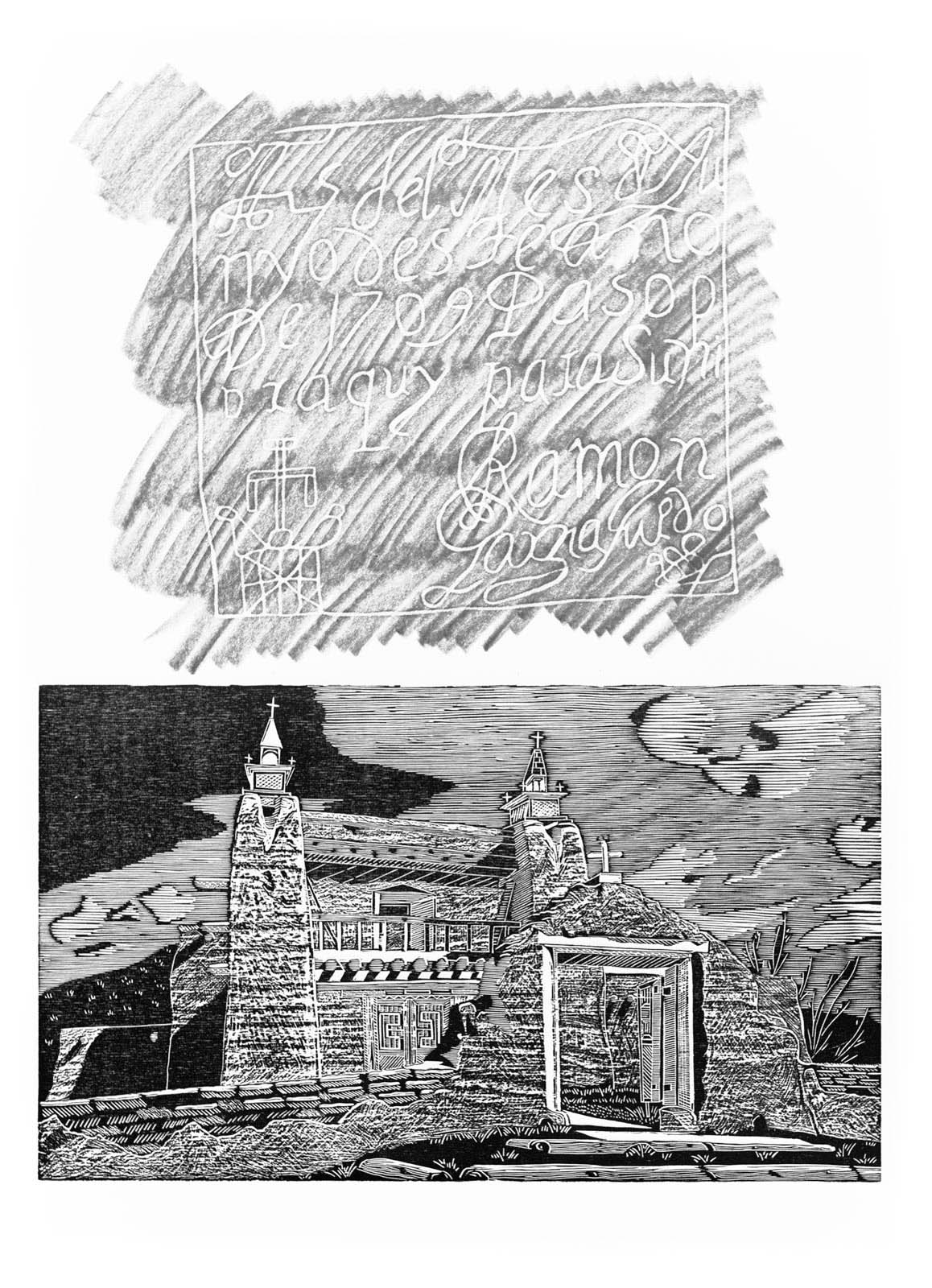
Plate 5
26 x 19 inches paper size
top: graphite rubbing of reproduced inscription from El Morro National Monument, NM
Ramon Garcia Jurado, Spanish soldier, 1709
bottom: woodcut, Iglesia de San José de Gracia, Las Trampas, NM, built 1760
|
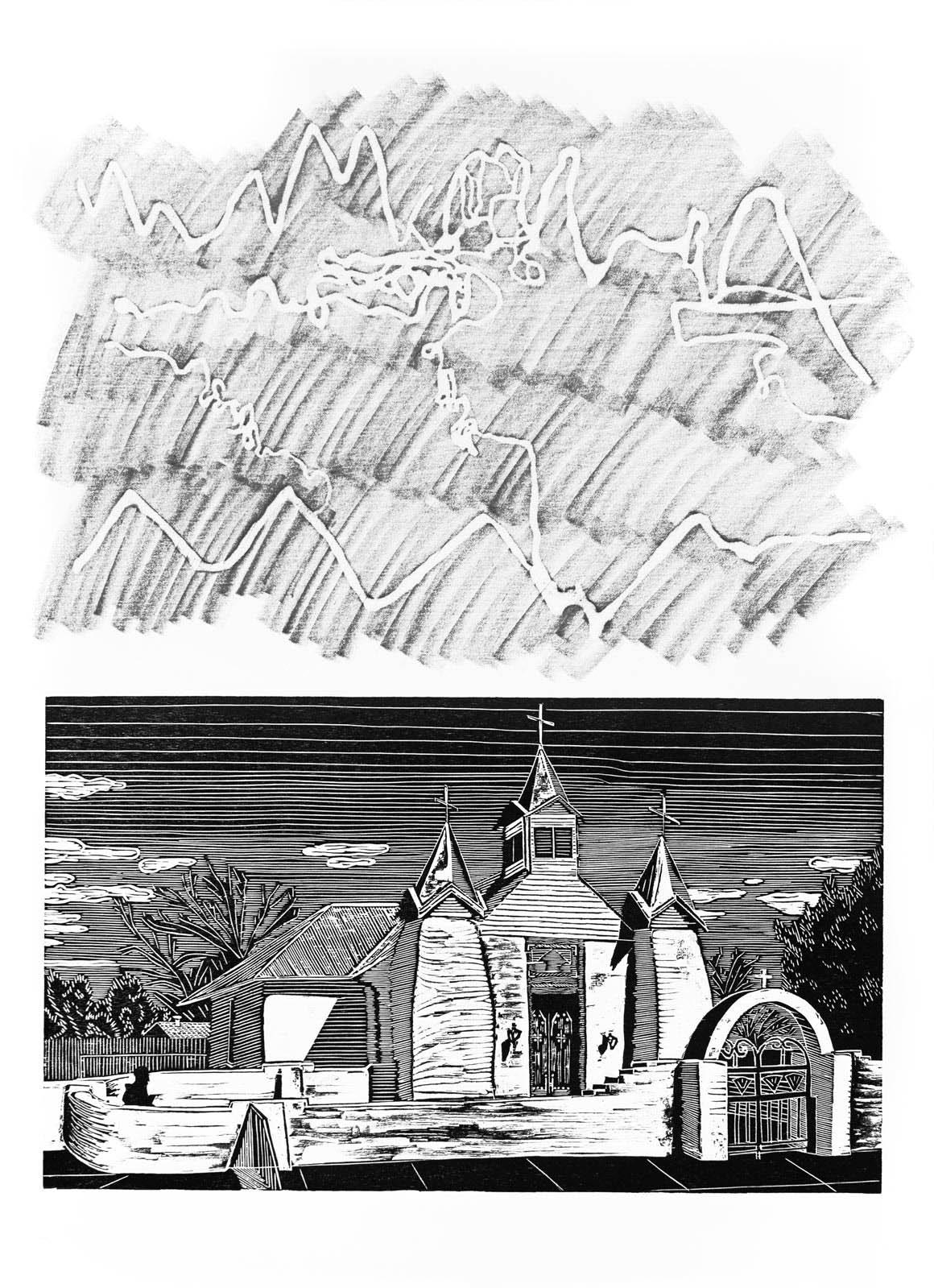
Plate 6
26 x 19 inches paper size
top: graphite rubbing of Bark beetle egg gallery, Sangre de Cristo Mountains
bottom: woodcut, San Antonio de Los Lentes, Los Lunas, NM, built 1789
|
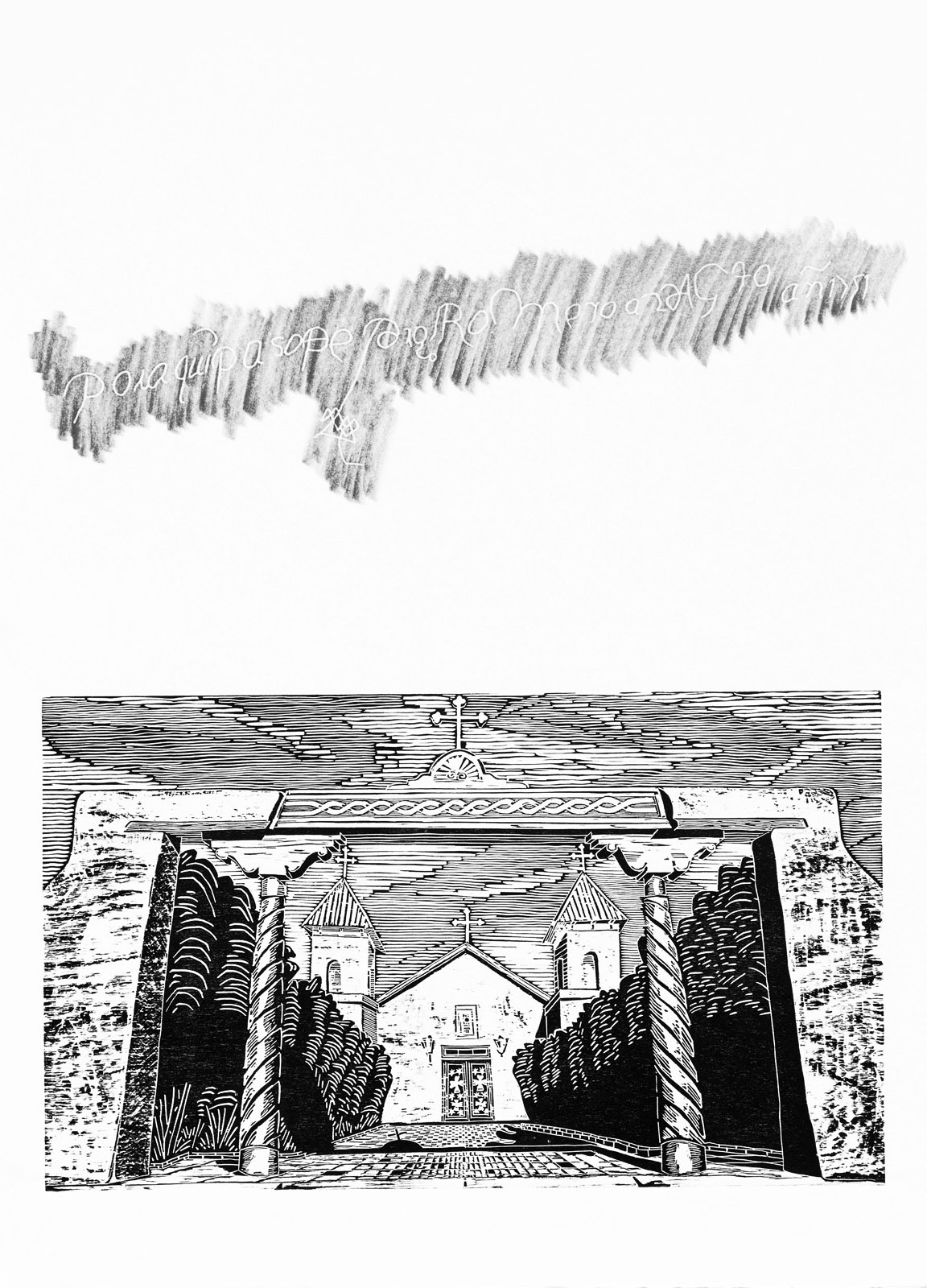
Plate 7
26 x 19 inches paper size
top: graphite rubbing of reproduced inscription from El Morro National Monument, NM
Pedro Romero, Lieutenant of the Jurisdiction of Acoma and Laguna, 1751
bottom: bottom:
woodcut, Santa Cruz de la Cañada Catholic Church, Santa Cruz, NM, built 1733
|
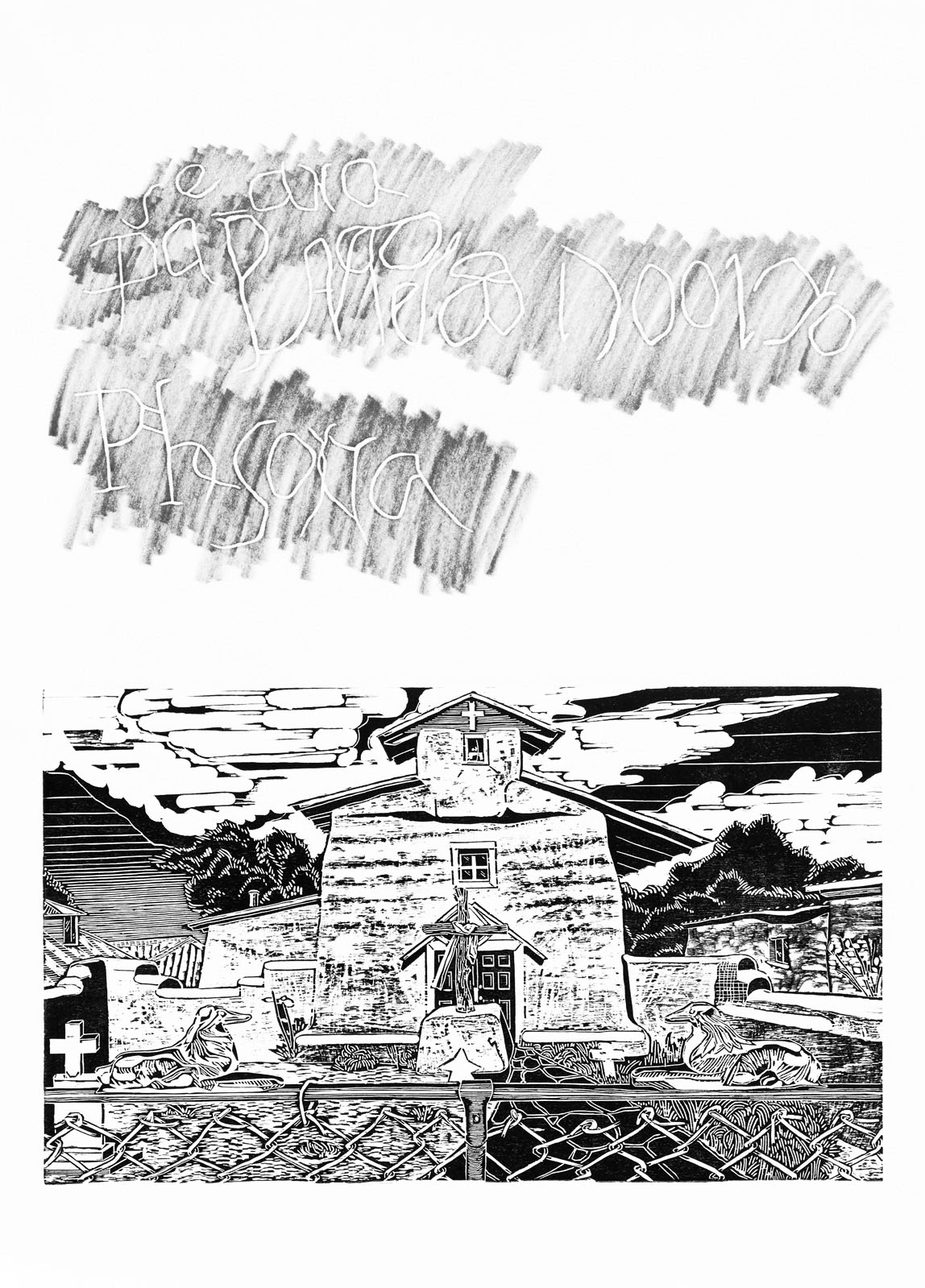
Plate 8
26 x 19 inches paper size
top: graphite rubbing of reproduced inscription from El Morro National Monument, NM
Phelipe Garsia, Spanish soldier, 1700
bottom: woodcut, San Antonio de Padua Church, Córdova, NM, built 1832
|
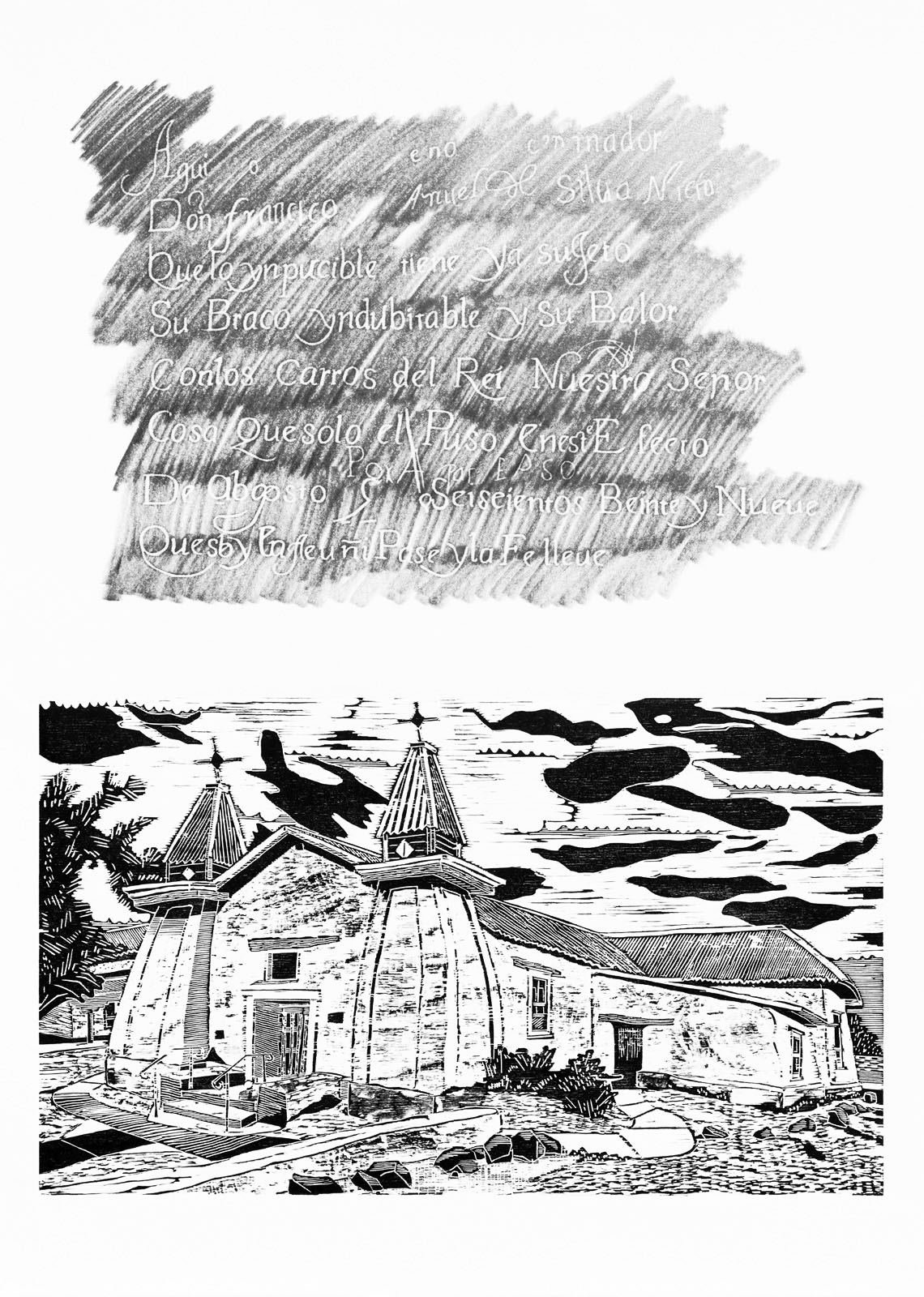
Plate 9
26 x 19 inches paper size
top: graphite rubbing of reproduced inscription from El Morro National Monument, NM
Captain Don Francisco Manuel de Silva Nieto, Governor, 1629
bottom: woodcut, San Ysidro Church, Corrales, NM, built 1868
|
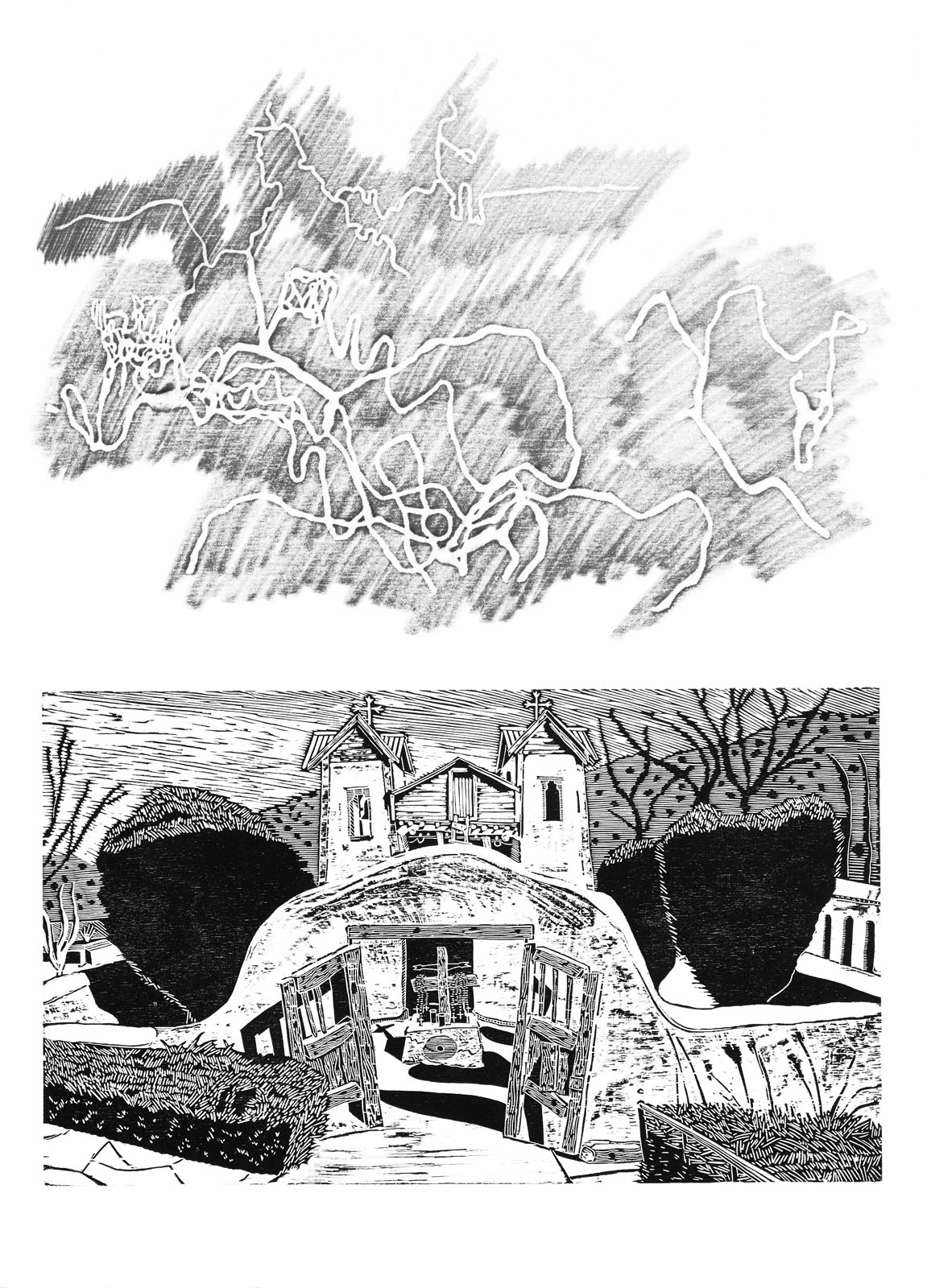
Plate 10
26 x 19 inches paper size
top: graphite rubbing of Bark beetle egg gallery, Sangre de Cristo Mountains
bottom: woodcut, El Santuario de Chimayó, Chimayó, NM, built 1816
|

Plate 11
26 x 19 inches paper size
top: graphite rubbing of Bark beetle egg gallery, Sangre de Cristo Mountains
bottom: woodcut, Nuestra Señora de Guadalupe, Velarde, NM, built 1817
|
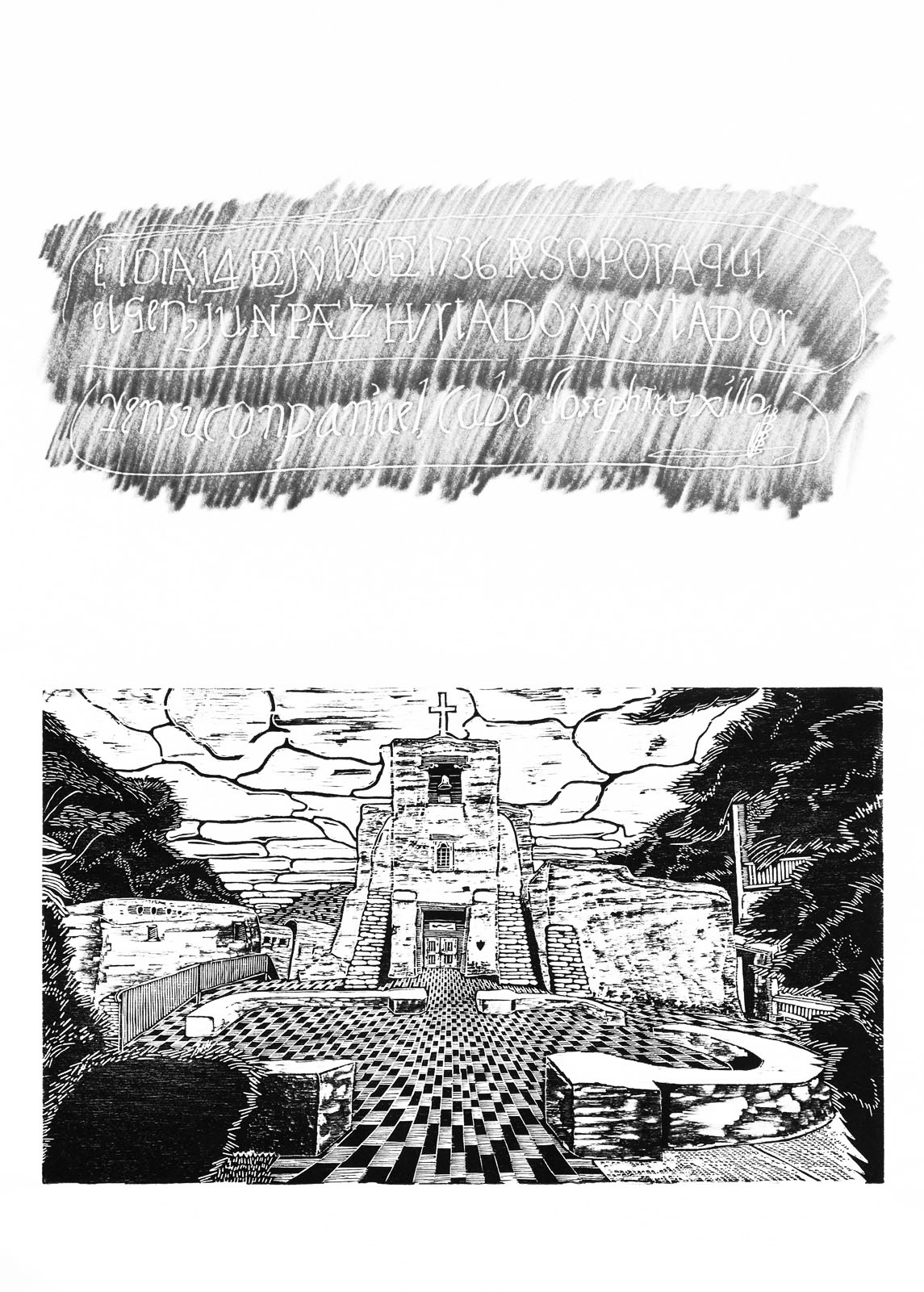
Plate 12
26 x 19 inches paper size
top: graphite rubbing of reproduced inscription from El Morro National Monument, NM
General Juan Paez Hurtado and Corporal Joseph Truxillo, 1736
bottom: woodcut, San Miguel Chapel, Santa Fe, NM, built 1610
|
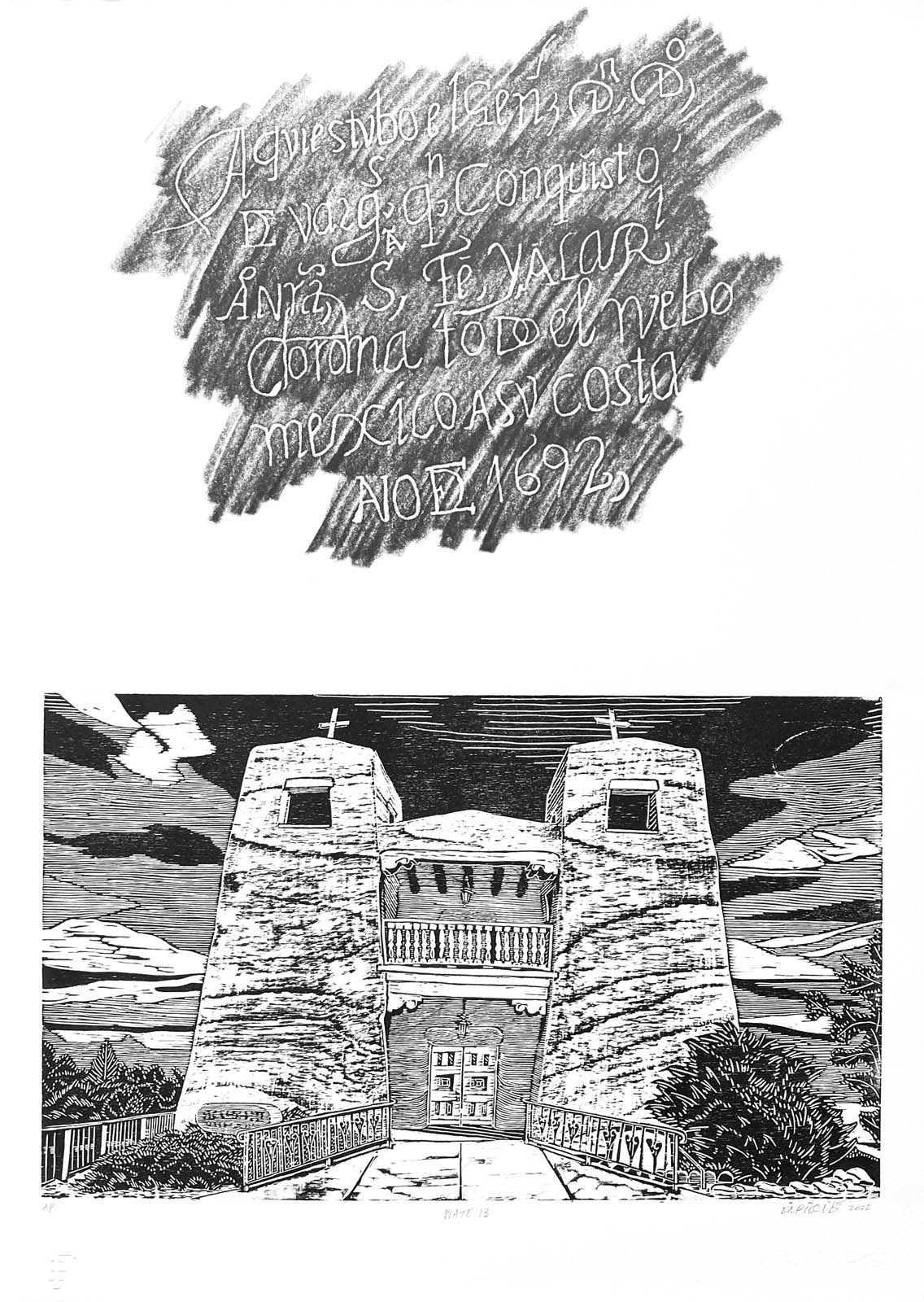
Plate 13
26 x 19 inches paper size
top: graphite rubbing of reproduced inscription from El Morro National Monument, NM
General Don Diego de Vargas, 1692
bottom: woodcut, La Iglesia del Sagrado Corazón, Nambe, NM, built 1947
|
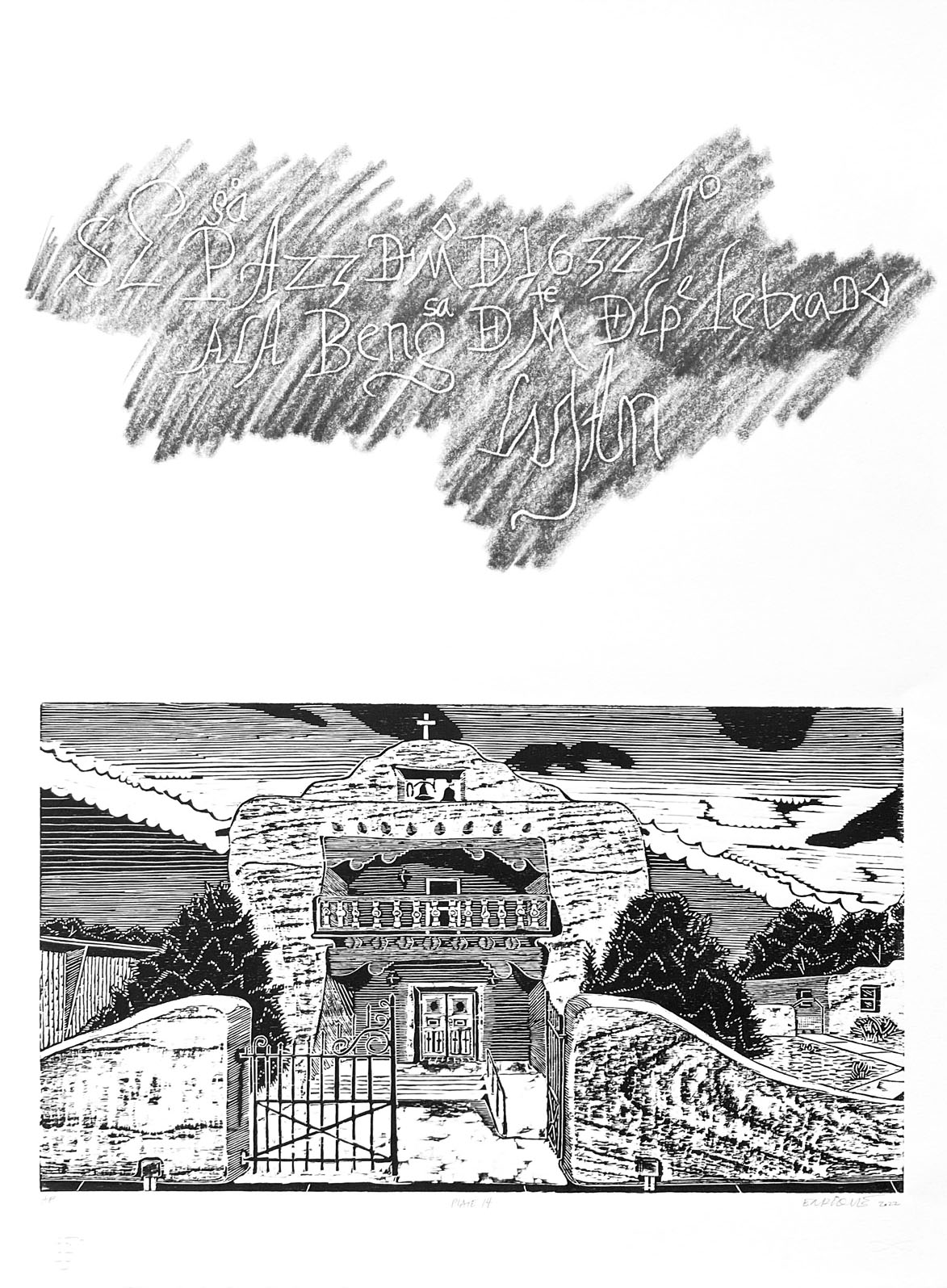
Plate 14
26 x 19 inches paper size
top: graphite rubbing of reproduced inscription from El Morro National Monument, NM
Juan Luján or Francisco Luján, Spanish soldiers, 1632
bottom: woodcut, Santo Tomas el Apostol, Abiquiú, NM, built 1935
|
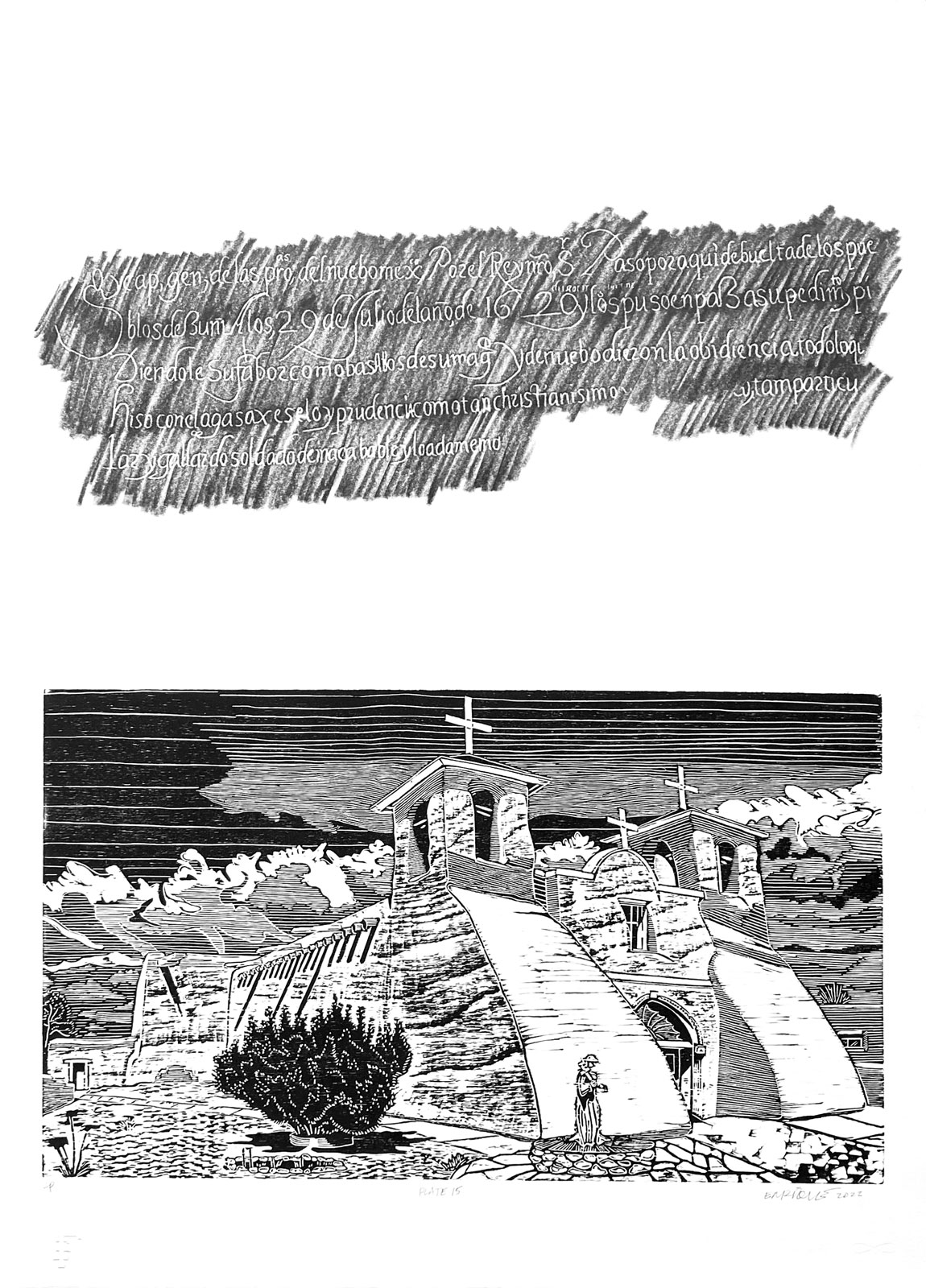
Plate 15
26 x 19 inches paper size
top: graphite rubbing of reproduced inscription from El Morro National Monument, NM
unknown author, 1620
bottom: woodcut, San Francisco de Asís Mission Church, Rancho de Taos, NM, built 1772
|
|



















